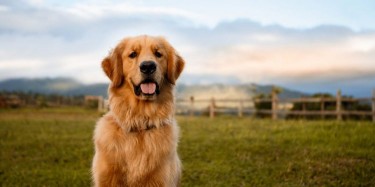
Basics of Australian Bulldogs
When you send a bulldog into the outback, what do you get? You will cherish this brilliant, incredibly devoted, and gentle animal for the rest of your life. Simply put, an Australian Bulldog makes a wonderful family companion. These dogs are very affectionate and relaxed back, and they adapt well to a wide range of lifestyles. They are also fantastic with youngsters. An Aussie Bulldog may live happily in both a city apartment and a home with a wide backyard, as long as his owners are ready to give him with appropriate exercise and living conditions. All these dogs require is the proper quantity of food, attention, and exorcize.
The Australian Bulldog is very similar to its English cousins, but there are some notable differences as well. The Australian Bulldog was bred with the goal of creating a more “functional” bulldog—one that had the size and strength necessary to do the job they were meant to do. Although they are more active than the average bulldog, they are still not the most athletic doggos out there. Their unique breeding does give them a few advantages over their purebred counterparts Australian Bulldogs and their cousins still have specific needs and peculiarities. They have a distinct personality, just like all dogs, and they will require an owner that is prepared to provide them everything they require for a long and happy life. Do you think you would benefit from having an Australian bulldog in your life? There’s just one approach to learn more. Rest assured, it’s not that hard. All you have to do is scroll away with your eyes fixed on this page! Continue reading to determine if an Australian Bulldog is the ideal pet for your household. Here is all the information you could possible need to know about these amazing dogs.
Starting point
Noel and Tina Green, the creators of the two breeding operations that gave rise to this breed, gave it the name Australian Bulldog. With the goal of producing a bulldog that is more functional—that is, more suited to the Australian climate—the two breeding projects, N&T Green (Jag Lines) and Pip Nobes, were initially launched independently before coming together. The Aussie Bulldog Club of Australia (ABCA), which was founded in 2007 and maintains a registration database to house all breeding and membership records in one location in order to support and advance the breed, was originally opened to the public in 1998.
Consumption/Diet
A healthy, balanced diet is essential for all dogs, and Australian Bulldogs are no different. Although these hybrid dogs are generally healthy, they may have various shortfalls and health problems if they do not receive the right nourishment to sustain them at different periods of life. Feed only premium food to your Australian Bulldog to avoid this. Since dry food is easily accessible and provides all of the vital nutrients that a dog requires, most owners choose it. Naturally, not all dry foods are created equal, so it’s important to select a blend that will be ideal for your Australian Bulldog. This would often entail kibble that is composed of premium, natural ingredients, with meat being the first item on the list of ingredients. Avoid kibble that contains a lot of artificial ingredients and cheap fillers.
The Australian Bulldog is a medium-sized dog breed, so it’s important to feed it a diet designed for dogs of that size. These dogs are also fairly active, so they might benefit from a high-quality dog food designed for active dogs. Their kibble should also be age-appropriate, with pups, adults, and seniors having slightly different dietary needs. Once you’ve chosen the right kind of food for your Australian Bulldog, you should make sure you’re feeding them the right amounts of it; a dog of their size typically doesn’t need more than 3 cups of kibble daily, but you should check the manufacturer’s recommendations for precise amounts. Divide your dog’s daily dosage into two or more meals to keep them full throughout the day.
Exercise
The intelligent Australian Bulldog breed gains from early socialization and training. Socialization will be necessary to offset this dog’s predisposition toward dominance against other dogs. These dogs should be socialized with kids and other animals from an early age so that you can help them with any undesirable behaviors. An Australian Bulldog will be laid back and amiable rather than domineering if he is raised around other dogs or comes into contact with other animals at an early age.
Because Australian Bulldogs are people-oriented and loyal to their families, positive reinforcement-based training approaches will be well-received by them. Treats and praise can help your dog obey commands or discover where to relieve themselves. These dogs require leadership from their owners and respond well to firm, consistent training. It’s critical to take the lead in the relationship and establish yourself as the alpha while basing your training in encouragement and positive reinforcement. Anything less is more akin to abuse than training, and it will not only never yield the desired results but will also irreversibly damage your bond with your dog.
Keep in mind that the earlier the training begins, the better. This provides you with the essential advantage. You may have a more difficult task if you start the training too late. Starting when they are still puppies is ideal! If you have treats and patience on your side, training your Australian Bulldog puppy will not be too difficult.
Wight
For many prospective dog owners, the breed’s height and weight are their top concerns. These factors can determine a number of things regarding dog care, including food and housing requirements. The typical Australian Bulldog male weighs between 60 and 78 pounds and is between 18 and 20 inches tall. The female is 50–61 years old and between 17 and 19 inches tall. A roughly medium to large sized breed, the Aussie Bulldog will need a moderate amount of space. This is definitely not a small breed. They will do best in most average homes, and can benefit greatly from a fenced-in yard as well. Of course, the larger the home, the more the Aussie Bulldog will thrive. They’ll need to be exercised often, and extra space is key for this. Although not overly large, this breed won’t thrive in a tiny home or a small apartment. Best not even consider these options. Every dog needs free space, and the Australian Bulldog is no exception.
You will quickly discover that this breed develops undesirable and unhealthy behavioral disorders if you keep them confined for an extended period of time or without enough open room. Anxiety, hostility, incessant barking, and other strange behaviors can be brought on by insufficient room and exercise. Thus, if you take care of these fundamental requirements, you can be sure that your four-legged buddy will always be happy, sociable, and healthy.
Temperament/conduct
There’s a cruel, widespread myth that says all Bulldogs are inherently aggressive. This is completely untrue. The way a dog is raised and trained by its owner can have a significant impact on the dog’s disposition, mood, and character. Dogs frequently reflect their owners in the same way. So let’s dispel those unpleasant misunderstandings.
The Australian Bulldog is a friendly and gregarious breed that values family. Compared to other breeds, bulldogs—including Australian Bulldogs—are far less reserved since they were originally designed to battle bulls and other huge animals. These canines exude pride in their beauty and have a relaxed yet self-assured disposition. Usually, they very well as companion pets because they are loyal with their owners and they love human interaction. This breed is rarely aggressive toward people but they do make good watchdogs. The Australian Bulldog can be dominant toward other dogs in its territory but, with proper socialization, can get along with other dogs and pets. This is why it’s important to start training and socializing your puppy as soon as possible. It’s important to not let those early and impressionable puppy days go to waste. All in all this can be a perfectly fun and friendly dog breed, and quite affectionate as well – especially if you begin socialization early on!
Typical Health Issues
Designer dogs and crossbreeds can occasionally be unexpectedly healthy—much healthier than their parent breeds. This is because many of the defects and health issues of the parent breeds are eliminated via meticulous and selective breeding. There are no guidelines here, though, and some dogs may just be healthier than others.
A lot of work has gone into preventing congenital disorders and preserving the Australian Bulldog’s genetic integrity. The Australian Bulldog, a brachycephalic breed with a short face, is more likely than other breeds to experience respiratory issues and heat exhaustion. Long walks and workouts should be avoided in dry, hot weather as they may be too stressful on your Bulldog. It is also recommended that you wipe the dog’s face with a damp cloth on a daily basis to clean out the wrinkles – this will help to prevent skin problems from forming. Dirt and gunk tends to get accumulated in these folds and wrinkles, and that turns into a fertile breeding ground for bacteria and parasites. So keep your pet clean and tidy.
Aside from all of this, the Australian Bulldog is typically regarded as a sturdy, resilient, healthy breed. They often have a strong immune system because of their large stature and robust build. Still, you can’t realistically expect children to live a life free from sickness. They will require your care in every way, so they can have the best possible health.
Lifespan Estimate
The Australian Bulldog breed has an average lifespan of ten to twelve years. When it comes to dog years, this falls well into the golden average. For most dogs, the acknowledged maximum lifespan is approximately 15 years, and this breed is rather near to that threshold. Given their silly antics and strong camaraderie, an Australian Bulldog can grow up to be a wonderful buddy and companion for many years.
Of course, your pet will need your assistance to live this long. Only with adequate care, such as a balanced diet, frequent veterinary checkups, and lots of exercise, is it achievable. Who knows, your pet might live past the age of 12 with this on their side! In either case, spending more than ten years of your life making wonderful memories with your small puppy companion by your side is the best thing you could do.
Coverage/Coat
For dog owners who would rather not have a shaggy, shedding dog, we have some good news. The Australian Bulldog is a little dog with a smooth, short coat that is reasonably easy to maintain. This dog sheds on average, but it can be kept under control by periodically brushing it with a firm-bristle brush. This breed has a range of colors, such as pied coloring, reds and fawns, and shades of brindles. Coats that are black or tricolored are acceptable, but they must solely be from the BBD lineage and not from any other breed. Thus, compared to the other coat colors, these are not nearly as popular.
Naturally, despite its smooth texture and minimal shedding, this coat will still require some of your care. Make an effort to brush them every day, or as often as possible, a few times a week. By doing this, you’ll simplify upkeep and ensure that your dog stays neat and attractive at all times. In the long term, you’ll find coat upkeep gratifying if you establish a decent regimen!










